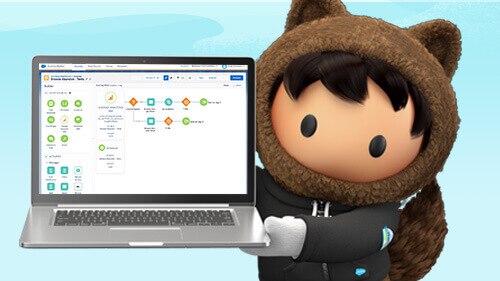How Salesforce Increases Its 360° Customer View With Google



Salesforce's CMO on why understanding what is important to customers is critical to business longevity. Learn how to know your customers by enabling a complete view that uncovers the answers you need by integrating Marketing Cloud and Sales Cloud with Google Analytics 360.
More. It’s certainly one way to sum up the current marketing landscape. There are more available channels and more information. Consumers have more access, can make more-informed decisions, and hold more power as a result. And that means more — or higher — customer expectations. They expect you to be extremely nimble, transparent, and available to hear from them and then respond accordingly. They want more.
In this 24/7, data explosion world, companies are struggling with how to know their customers so they actually have a chance at meeting these heightened expectations at scale. I think there are a lot of businesses playing catch up. For so long organizations were driven by profit and loss, and while that may appeal to shareholders, these same companies lost sight that if you’re doing right by your customers and you’re measuring your success on their success, you’re going to win every time.
Every CEO I talk to or hear speaking today is recognizing that the customer experience is critical to the longevity of their business. But you can’t get there if you don’t know your customer and understand what is important to them. Bits of information and cuts of data sprawled across an organization aren’t enough. If you invest in building out a 360-degree view, the answers are there. Your customers will tell you what they need and what they want.
How to know your customers
I’ve been saying for a while now that there’s never been a better time to be a marketer. We sit at the epicenter of customer interaction and are significant in shaping what that experience is going to be. Marketing at Salesforce is no exception. We’ve always had customer success as one of our corporate core values and that’s been guiding all of our decision making for more than 20 years.
A big part of ensuring customer success means giving customers what they want, when they want, and on their preferred channel. For so long there has been a channel hype cycle. Years ago it was direct mail. Then email was the channel du jour. Then social media. Voice is now upon us. There’s always going to be that “it” channel. Now we’re innovating and taking that customer focus a step further by delivering journeys based on how we know the customer wants us to interact with them and building out their profile in a trusted way.
Marketers, probably more than any other functional area or department, have had to deal with such a sprawl of tools and technology over the last five years. It’s caused a lot of inefficiency with too much time spent trying to stitch them together to get that single customer view. At Salesforce, it became very clear to us that a direct integration between Salesforce and Google would be transformational, not only for our joint customers — I haven’t met a marketer out there who isn’t using Google — but also for our own marketing efforts to better know our customers.
The move to Google
Along with establishing the strategic partnership with Google, Salesforce has made our own move from a legacy web analytics provider to Google Analytics 360. We also plan to leverage additional components of the Google Marketing Platform such as Display & Video 360, as well as Google Cloud BigQuery. Using those solutions in combination with our own capabilities provide us with the ability to bring disparate data together and move from insight to action. Every marketer in our organization is getting the benefit and we’re going to market together to educate our customers.
It’s a game changer to be able to use the direct integration between Google Analytics 360 and Salesforce Marketing Cloud for complex segmentation and analysis of customer interactions. The audiences built from that data can then be activated in meaningful and personalized journeys across channels so you are consistent with your ads and direct email marketing campaigns. And together with the suite of Marketing Cloud capabilities and Salesforce Einstein, you can let data, artificial intelligence, digital insights, and customers preferences lead the way. That’s the holy grail for marketers and what we’re delivering here at Salesforce.
It’s an exciting time because this move to Google Marketing Platform helps us respond more quickly and deliver on our customers’ expectations. We get information back in real-time and can change the course of a customer or prospect journey as it’s happening. We’re no longer looking in the rearview mirror at analytics of the past. Our engagement metrics and lead volumes are higher than ever before, and it’s positively impacting our customer satisfaction.
See these additional Salesforce + Google resources:
Read more about how to better know your customers with Salesforce and Google.

























